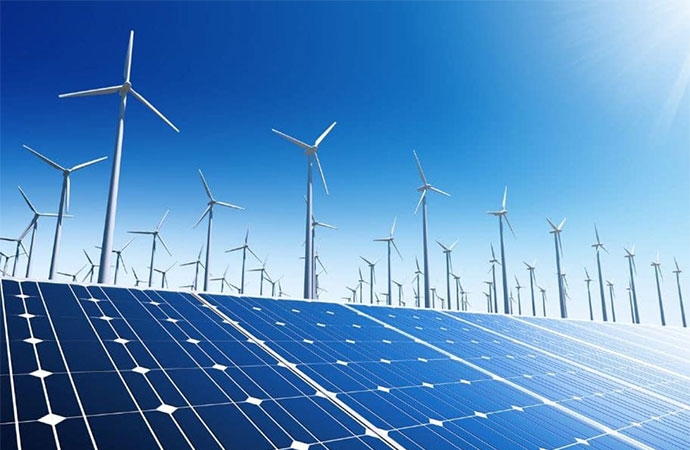Column

China is the planet's most populous country and second largest land mass. China has become one of the globe's fastest-growing post-industrial economies since reforms were put into place in 1978 by Deng Xiaoping and its rapid industry growth since then has led to competition with the United States and Europe.
China's standing has changed faster than any nation in history and is perhaps the most dynamic part of a new international order. The replacement of G-8 by G-20 in global politics did not come about by accident but by realizing that without China, global issues cannot be adequately addressed.
China's expanding economic, military and diplomatic influence has contributed to its image as a formidable world power. It is reported that by 2028 China will be the world's largest economy, putting the economy of the US into the second position.
Economic, political, military and strategic influence is moving to Asia. China may eventually turn the 21st century as 'Asia's Century' with other Asian countries.
Given the above context, it is natural that China's footprint is gradually getting larger in South Asia and in the Indian Ocean.
China's past "ping-pong diplomacy" is replaced by "cheque-book diplomacy. China is attracted to investment in South Asia in sectors which would generate good returns to China and it is reported that in the next five years, China is to provide $30 billion investment and $20 billion loans in South Asia.
In October 2013, China proposed to form a bank, Asian Infrastructure Investment Bank, with an estimate approved capital of $100 billion. The Bank would mainly focus on infrastructure construction in Asia to promote regional connectivity and economic cooperation. Bangladesh India and Nepal reportedly expressed their interest to join as members of the Bank. The Bank will be complementing the work of other entities, like the Asian Development Bank (controlled by Japan and the US).
China has proposed two silk routes -one maritime silk route for trade for littoral states of the Indian Ocean and the other is economic corridor through land territory connecting Bangladesh, China, India and Myanmar (BCIM).
In December 18, 2013 officials from four countries attended the two-day meeting of the joint working group of the BCIM corridor at Kunming and underscored the need to implement the plan at the meeting. The meeting at the official level from BCIM countries demonstrated that plan of the BCIM corridor had the approval in principle by the four countries.
China's maritime silk route of the 21st century for littoral countries of the Indian Ocean has reportedly received strong support from the Maldives, Sri Lanka and Singapore in addition to many African countries. All these countries perceive that the maritime silk route could act as a catalyst for development of trade and investment.
Bangladesh:
Bangladesh is a nation of strategic importance not only to South Asian region but to the larger geo-political dynamics of Asia as a whole. The country constitutes a bridge between South Asia and South East Asia. This provides an opportunity for interaction with Bangladesh by South East Asian nations and China. Bangladesh's access to the Indian Ocean is commercially and strategically important.
Bangladesh and China has maintained close and cooperative relations. Many politicians and academics believe that friendly relations with China will act as a counter-weight to Bangladesh's relations to India and Bangladesh will have more negotiating power with India.
The policy "Look to the East" has ushered in a new phase of Bangladesh foreign policy under the current government. It is reported that Bangladesh Prime Minister Sheikh Hasina received commitment of financial support and investment from China in a big way for about 14 infrastructure projects.
The more investment Bangladesh receives from China, its goal of becoming a middle income country by 2021 will be quicker. The two nations have everything to gain from adapting and developing this investment relationship. The governments and the peoples interact closely in the case of investment and the relationship with the investor-country is deep and lasting.
Some analysts think that India's offer of $1 billion loan to Bangladesh in 2010 also prompted China to think how it could play a greater role in Bangladesh. China's financial support for Bangladesh during the last three years surged significantly. China has gone to the global scene including in South Asia as an investor which is often called "cheque -book diplomacy". . China has already built six bridges across the rivers in the country which contributed to the accelerated socio-economic growth of the country, facilitating the movement of people and goods within the country.
Over the past few years, China has replaced India as Bangladesh's biggest import destination though heavily skewed in favour of Beijing.. To remove the trade imbalance between the two countries, China offered in 2010 duty-free access to some 5,000 Bangladeshi products in a "goodwill gesture". The products include medicinal materials, plastic appliances, leather, timber, textile, readymade garments and poultry products.
China has shown its interest in constructing a deep sea port at Sonadia, near Chittagong with $5 billion, the gateway to the Bay of Bengal. It is reported that the total cost of the deep sea port with its three phases would cost about $9 billion. Bangladesh however is reportedly considering a consortium of countries to build the deep sea port with India, China, Denmark, Netherlands, UAE and the US.. Some analysts say that Bangladesh does not want to give to China alone to build the sea port to avoid upsetting India.
It is reported that China is an important supplier of arms and weapons to Bangladesh including submarines. Since 2010, the government has taken firm steps in gradually building Bangladesh Navy as a deterrent force and the acquisition of submarines is a part of the plan to defend its off-shore areas.
Nepal:
China has continued to keep its relations with Nepal with assistance in various sectors of the economy. Nepal views the Tibet autonomous region as a gateway to the markets of inland China and the wider world, according to a senior Nepalese diplomat in Lhasa as reported in the media.
"The Chinese and Nepalese people are expecting great things from each other. Nepal and Tibet have had strong religious, cultural, business and interpersonal ties throughout history, ever since they first began trading food for salt, gold and wool.
Trade nowadays is more dynamic and multifaceted between the two sides. Goods from China are very much loved by Nepalese people. Both are working to develop trade hubs for bilateral and international trade."
Beijing is funding a 60-megawatt power plant on the Trishuli river in Nepal, already under construction, and a $1.6 billion, 750-megawatt joint venture on the Seti river, due to be completed by December 2019. For the first time, China's investment in Nepal has surpassed India's. China has also reportedly been wooing Bhutan with tempting investment proposals. Chinese aid to Nepal has increased from $24 million to $128 million for 2015-16. China proposed to build a Nepalese Police Academy.
To reduce the trade deficit, Nepal and China in 2010 signed an accord that will allow zero-tariff entry facility to 4,721 Nepali exportable items in the Chinese market. The list of commodities enjoying the facility covers some 60 percent of total products that Nepal exports to China.
The two sides also agreed to construct and manage dry ports along the six Nepal-China border points in a bid to facilitate bilateral trade and movement of people. China agreed to allow citizens of Nepal residing within 30 km of the international border to use the pasture and graze their livestock on the other side of the border.
It is reported that Nepal also requested China to extend railway line that it was building up since 2008 to the bordering town Khasa to Kathmandu and also up to Lumbini. The Chinese premier in 2012 during his visit to Nepal said such an extension was highly possible.
"Despite geographic proximity, cultural intimacy, economic interdependence and shared political values, India has stumbled in Nepal," wrote C. Raja Mohan, columnist for The Indian Express. Citing a growing perception in Nepal that "India promises, China delivers", he wrote that "India's record of project implementation in Nepal is awful".
Maldives and Sri Lanka:
The Chinese President paid a visit to Maldives and Sri Lanka in the middle of September of 2014 before visiting India appeared to be significant. The Maldives which straddles major international shipping lanes in the Indian Ocean is both commercially and strategically important to big powers. During the visit of the Chinese President, trade and security issues were reportedly discussed. In a joint statement, the two countries said they agreed to cooperate on security issues - a potentially sensitive issue in a region traditionally dominated by India.
The Maldives also secured Chinese support for an ambitious project to build a road bridge between central Male Island and nearby Hululle island, where the international airport is located.
It is noted that Chinese investment there has grown significantly as Beijing tries to secure vital trade routes. "The Maldives welcomes and supports the proposal put forward by China to build the 21st Century Maritime Silk Road.
After the Maldives, Chinese President Xi Jinping arrived on 16th September in the same year for the first state visit to Sri Lanka by a Chinese head of state in decades.
Xi said upon his arrival reportedly stated that the two countries are "good brothers sharing weal and woe, good partners seeking common development and good friends with close relationship," "I hope the visit will promote the profound friendship between the two peoples and that the ship of China-Sri Lanka friendship will brave the wind and waves along the magnificent 21st Century Maritime Silk Road," Xi said.
Pakistan:
Pakistan is a long-time ally of China. No other country has ever backed and armed another Asian country as China has backed and armed Pakistan over the years in such a consistent manner. India claims that the close links China has developed with Pakistan poses a security threat to India.
Prime Minister Nawaz Sharif visited China in July 2013. During the visit he reportedly said at the Great Hall of the People in the Chinese capital that "reminds me of the saying, our friendship is higher than the Himalayas and deeper than the deepest sea in the world, and sweeter than honey".
Beijing has been involved with the upgrade of the Karakoram Highway as part of a proposed economic corridor between the two countries. During the visit of the Chinese Premier Li Keqiang to Pakistan in May 2014, the two sides reached an agreement on building a China-Pakistan economic corridor starting from the Arabian Sea.
On bilateral relationship, China's Global Times writes: "China and Pakistan enjoy the best of bilateral relations, and their relationship has no parallel in modern international relations. This relationship could be a role model for other states. For Pakistan, China is and will remain the keystone of its foreign policy."
Li Mingjiang, a professor at the S. Rajaratnam School of International Studies at Singapore-based Nanyang Technological University, told the Global Times that the goal was to further consolidate China's long-term strategic influence in the region.
Wang Xiaopeng, an expert on maritime and border studies at the Chinese Academy of Social Sciences, said that the initiative could help China build strategic trust and manage disputes through breakthroughs in the economic sphere. "Politicians in those countries will have to get bilateral ties back on track, because they can't afford the consequences of missing out on opportunities provided by China's growth," Wang added.
String of pearls:
Observers argue China has been gradually encircling India by the so-called "String of Pearls". The term "pearls" meant naval facilities China reportedly has been developing in Pakistan, Sri Lanka, Myanmar, Thailand and Cambodia and possibly in Bangladesh.
Gwadar port in Pakistan, being built in Baluchistan coast, will be run by China. India thinks that both Pakistan and China may interdict Indian tankers, if necessary from this port.
Indian Ocean and China:
Access to the ocean is commercially and strategically important. However from its western point such as Somalia to the monarchies of the Persian Gulf to Iran and Pakistan along the shores of the Arabian Sea, lies the arc of instability.
Indian Ocean also has choke points and flash points, such as the Red Sea, the Strait of Hormuz, the Persian Gulf (Arab Gulf), the pirate-infested water off the Horn of Africa (Somalia), the Malacca and Sunda Straits, through which passes 40% of the world's seaborne oil, including a third of China's supply, 70% of Japan's and 90% of India's.
A growing dependence on seaborne imports represents a potentially vulnerability in Chinese eyes. Beijing has responded in two ways: first by beginning to build up its own naval power, and second by seeking alternative supply routes that are less susceptible to interdiction by the United States or other hostile powers. Included among these are overland pipelines to contiguous energy sources in Central Asia and a variety of ambitious engineering projects (including a new port at Gwadar in Pakistan, pipelines from ports of Myanmar, to China and a possible canal across the isthmus of Thailand) that could shorten the maritime route to China.
In his "Monsoon" (2010) , US author Robert D. Kaplan argues that, it is in the Indian Ocean that the interests and influence of India, China and the United States are beginning to overlap and intersect. It is here, Kaplan says, that the 21st century's "global power dynamics will be revealed." Kaplan is at his best when he describes the "new Great Game" that is now unfolding across the Indian Ocean.
The footprint of China in South Asia is possibly necessitated by the fact that China has a perception that the US is determined to contain Chinese influence across the world on the belief that if China rises, the US falls.. China perceives that the US has deployed its military all round its periphery. The US Taiwan Relations Act 1979 which required the US to "maintain (its) capacity...to resist any resort to force and other forms of coercion that would jeopardize its security...of the people of Taiwan" The deterrent intention of the US law is clear.
Furthermore, dissidents in Tibet and Xinjiang receive moral and diplomatic support and sometimes material assistance from ethnic diasporas and sympathetic Western governments. Furthermore, China has 14 adjacent countries. Except Russia, none of China's neighbours share their core national interests with those of China.
Conclusion:
Some strategists believe that the US must come to terms with the fact that China's rise is not simply a result of its failure of policy but is rather one of those great and highly infrequent historical shifts that governments can do relatively little to prevent.
Henry Kissinger in his book "On China"(2012), argues for an accommodation between the US and China. , Kissinger insists that the common interests the two powers should make possible a "co-evolution" to "a more comprehensive ¬framework." He envisions wise leaders creating a "Pacific community" comparable to the Atlantic community that America has achieved with Europe. All Asian nations would then participate in a system perceived as a joint endeavour rather than a contest of rival Chinese and American blocs.
Barrister Harun ur Rashid, Former Bangladesh Ambassador to the UN, Geneva

























Leave a Comment
Recent Posts
Why the two steps forward, one ...
We are disturbed by developments in relations with our most significan ...
EU underlines need for transpa ...
Ambassador of the European Union (EU) to Bangladesh Michael Miller on ...
There’s fresh impetus for Bangladesh-UK to work more ..
The week that Trump pushed the global economy to the ..
The United States and China are locked in a faceoff ..
Memories of Africa and Russia in 1996 and now